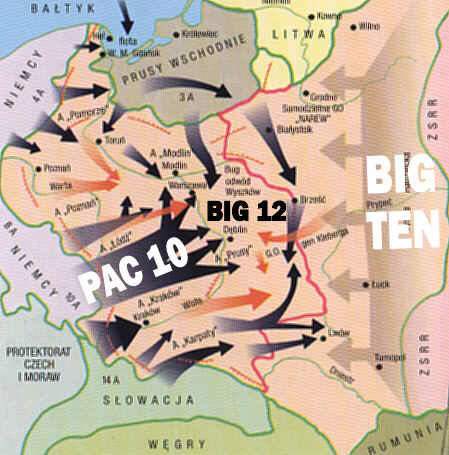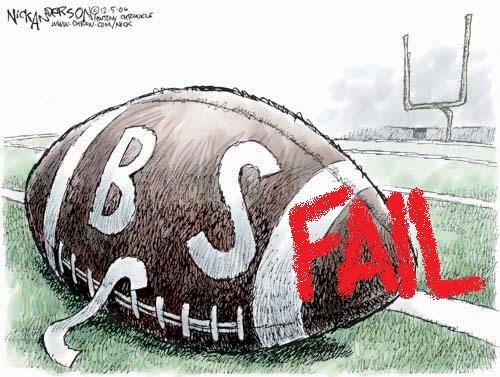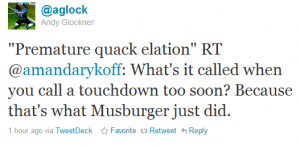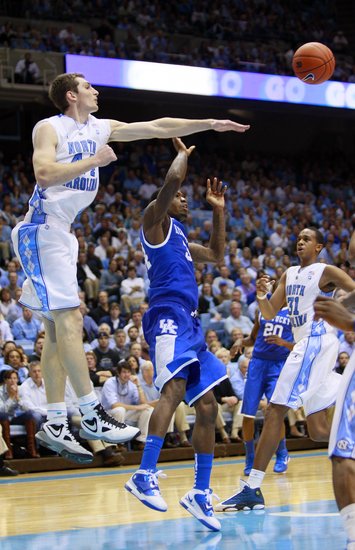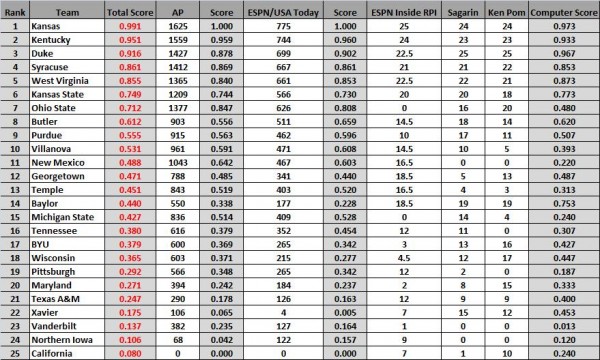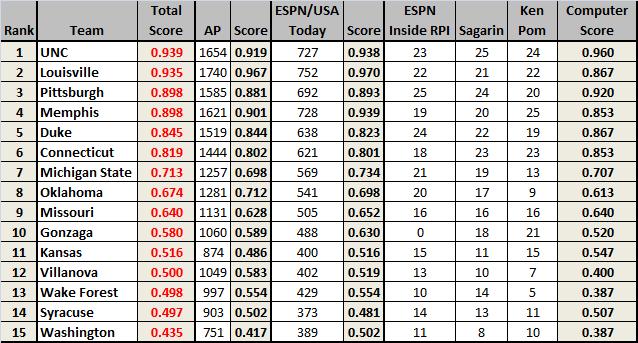Sunday you were probably there with every other college sports fan glued to your television at 8 pm as the bowl pairings were announced, right? Orrrr… not, as it came in dead last in its time slot on Fox. So why weren’t you there with your pencil and brackets bowl matchup worksheets in hand? Because you knew that there is only one more college football game that matters this season, and you already knew who was playing for it (i.e., traditional powers Alabama and Texas). Other than to the fans of the individual schools who can take a holiday-season vacation to (hopefully) a warmer clime, the other 477 bowls are utterly meaningless to the crowning of a national champion, a jury-rigged travesty that continues to barf on itself seemingly every year as teams who win every single one of their games are considered unworthy for a shot at the ultimate prize (particular hilarity reserved for when a non-trad BCS team such as Cincinnati is left out).
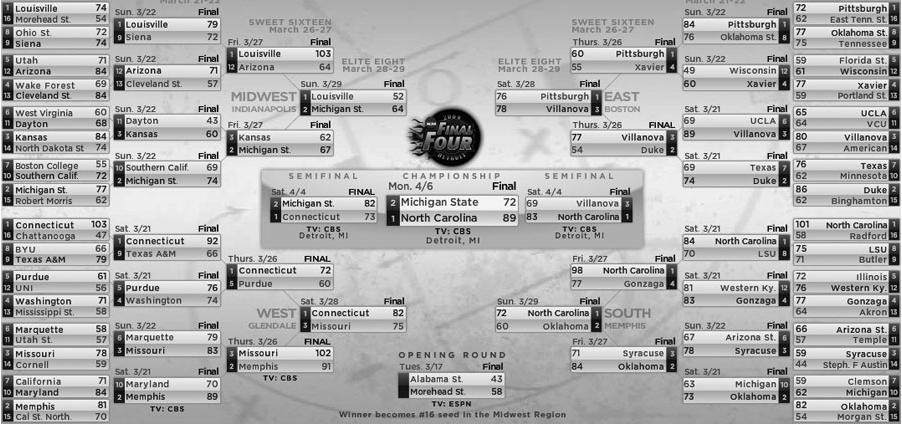
Why Mess With Perfection?
We Can Actually Learn Something From NCAA Football… Well, Sorta
The best argument that the BCS apologists make every year is that their system values the regular season, and this is true to a certain extent. The problem is that it overvalues the regular season at the expense of the postseason. It values the regular season so much that it excludes worthy teams from its national championship picture based on ambiguous metrics that include computer rankings and vaguely-tuned in coaches and sportswriters who have been shown to not put equitable and informed efforts into their ballots. Consider that last year’s basketball computer rankings — both Sagarin and KenPom — could have placed Memphis against UNC in the “BCS title game” at the end of the regular season. Given their personnel losses, did anyone actually believe Memphis was a Final Four team last year, much less a title contender? Of course not. Thank goodness for small favors… and the NCAA Tournament.
This is why, when those of us who favor a college football playoff argue in favor of it, we push for an 8-team or 16-team playoff. Like the current format of the NCAA Tournament, such an entity would allow for every realistic potential NCAA football champion to have a shot at glory. Cincy, Boise and TCU this year – check. Utah last year – check. Boise again in 2006 – check. And so on back through the running comedy that has been the BCS over the last twelve years. The reason that we support this system (over a 32-team playoff, for example) is that it allows for college football to crown a tested and worthy champion while also respecting the integrity of a national championship by only including deserving and excellent teams.
70% of BCS Teams Do Not Belong in the NCAA Tournament
When we read today that the NCAA is considering expansion of March Madness to 96 teams from its current 65, effectively folding the NIT into the Big Dance and adding another week to the Tournament, we really cannot get on board with this idea. Why not? Because put simply, the additional teams that will be invited are not worthy. Every year there are certainly a few bubble teams that have a great case for inclusion in the field of 65; but there aren’t 32 of them, and if we add another layer of middling BCS teams, we only serve to cheapen what is right now the greatest spectacle for excitement in all of sports while simultaneously further minimizing the importance of the regular season. Seriously, why even have a 16-game ACC schedule if you’ll get a bid by winning six or seven games?

Only a Handful of Bubble Teams Deserve Entry
Let’s look at this from a numbers perspective. Consider last year’s NIT field (presumably the #66-#97-ranked teams, discounting for the regular season champion clause). We’ll focus exclusively on BCS teams here because they are the most likely beneficiaries of the new setup. By our calculation, if the 2009 NCAA Tournament had included the NIT field, almost half (15) of the additional teams would have come from the BCS conferences, which would mean that FIFTY-ONE of the SEVENTY-THREE (70%) BCS conference teams would have been invited to the NCAA Tournament. So what’s the profile threshold that would have gotten you a bid last year using this format?
- Bubble Team (19-12, 9-10) – the typical team in this group lost to nearly everyone they were supposed to, beat very few elite teams, and mostly built up the majority of their wins in a soft nonconference schedule. They finished anywhere between 7th-10th in their conference and, on average, won one game in the conference tournament. There was nothing particularly interesting or compelling about any of these teams, and the odds of any of them making a run to the Round of 32, much less the Sweet Sixteen, would have been minimal. See below breakdown for a detailed look at the fifteen BCS teams that would have been invited last season.
So why add them? The answer that the coaches want to expand the NCAA Tournament is not satisfactory (of course they do!). The answer that media executives also want to expand it also falls on deaf ears (they are selling a product and can’t be relied upon to act in the best interests of the game). Whoever is seriously listening to this idea really needs to be removed from his or her post. Why would you mess with something that already works so damn well? As Mike DeCourcy so succinctly put it in today’s article, this is a “horrible idea” and would end up being a “disaster.” Couldn’t agree more, Mike.
2009 NIT BCS Team Breakdown
*note – all records and stats are prior to the 2009 NIT (conf reg season finish)
ACC – 7 NCAA teams, 2 NIT teams
- Virginia Tech (18-14, 8-10) – lost 7 of their last 9 games (t-7).
- Miami (FL) (18-12, 7-10) – lost 8 of their last 12 games (t-7).
Big East – 7 NCAA teams, 3 NIT teams
- Georgetown (16-14, 7-12) – is this a joke? Georgetown couldn’t beat anyone in the Big East; finished 4-11 in their last fifteen games. (t-11)
- Notre Dame (18-14, 9-11) – ND at one point lost seven Big East games in a row; five of their final six wins were against teams rated #80 or below. (t-9)
- Providence (19-13, 11-9) – at least PC had a winning Big East record, right? (t-7)
Big Ten – 7 NCAA teams, 2 NIT teams
- Penn State (22-11, 11-9) – PSU had a reasonable argument for inclusion last year with their resume, and they showed it by winning the NIT. (t-4)
- Northwestern (17-13, 8-11) – NW did not and their resume was in no way supportive of an NCAA berth last year. (9)
Big 12 – 6 NCAA teams, 3 NIT teams
- Kansas State (21-11, 9-8) – K-State is another bubble team that could have arguably received a bid to the Big Dance last year (t-4).
- Baylor (20-14, 8-12) – Baylor, on the other hand, went 2-10 in their last twelve regular season games prior to making a Big 12 Tourney run (10).
- Nebraska (18-12, 8-9) – lost five of their last eight and was sorely lacking in quality wins over the course of the season (9).
Pac-10 – 6 NCAA teams, 1 NIT team
- Washington State (17-15, 9-11) – a mediocre Pac-10 team who lost to nearly every good team it played last season. (7)
SEC – 3 NCAA teams, 4 NIT teams
- South Carolina (21-9, 10-7) – best wins of the year were against who? Kentucky and Florida? (t-1 East)
- Auburn (22-11, 11-7) – at least the Tigers finished strong, winning 9 of their last 11 games. (2 West)
- Florida (23-10, 10-8) – again, the Gators beat and lost to a bunch of other mediocre SEC teams – how is that NCAA-worthy? (3 East)
- Kentucky (20-13, 9-9) – losing 8 of their final 11 regular season games does not an NCAA team make. (t-4 East)
Out of the above group, there are maybe 3-4 teams that had a reasonable argument to be included in the field of 65 teams. Other than that, do we really want teams like the 2009 versions of Georgetown, Kentucky, Northwestern, Notre Dame, Miami (FL), and Baylor getting bids to the Big Dance? Let those teams stay in the NIT where they belong. Please.































